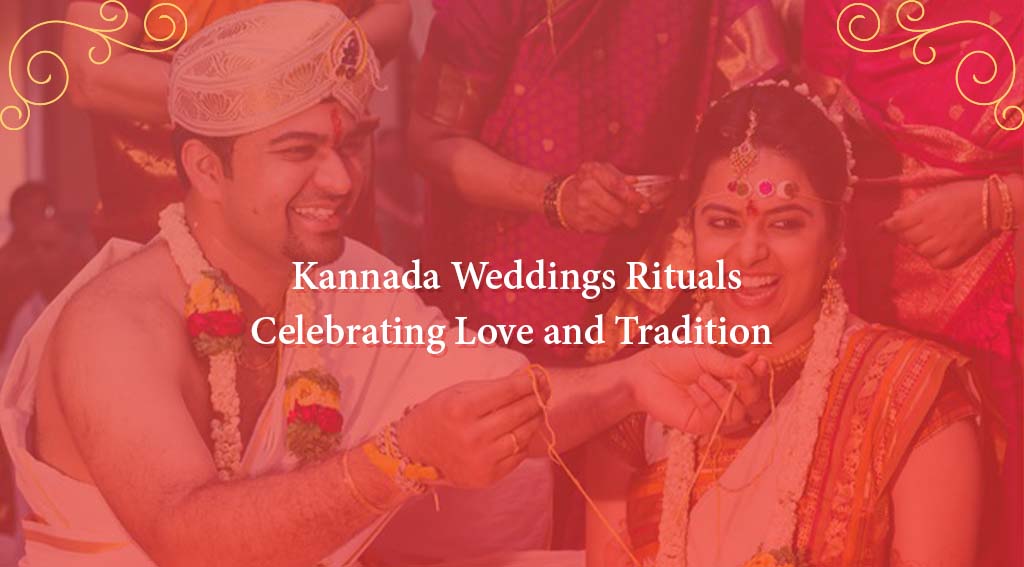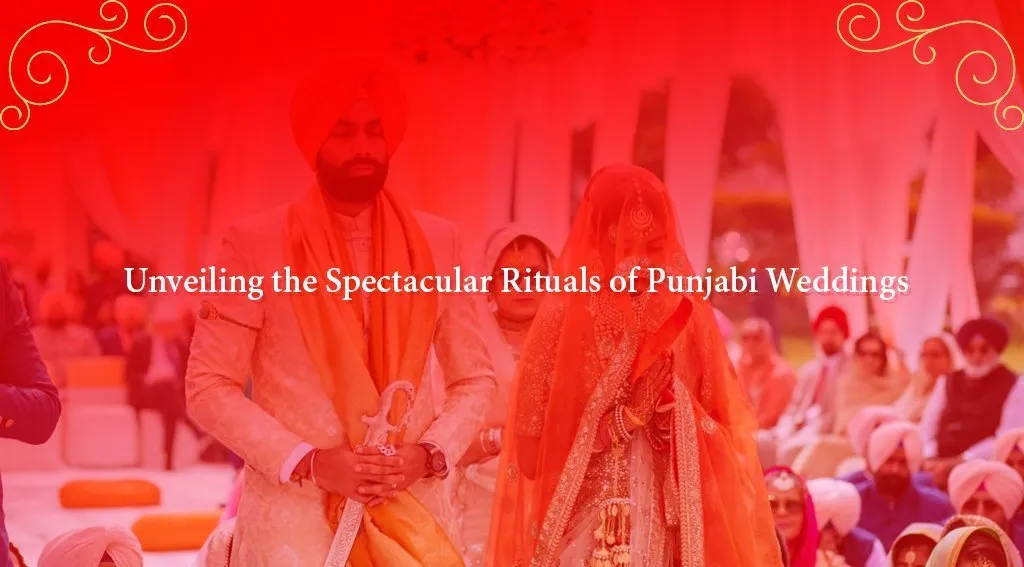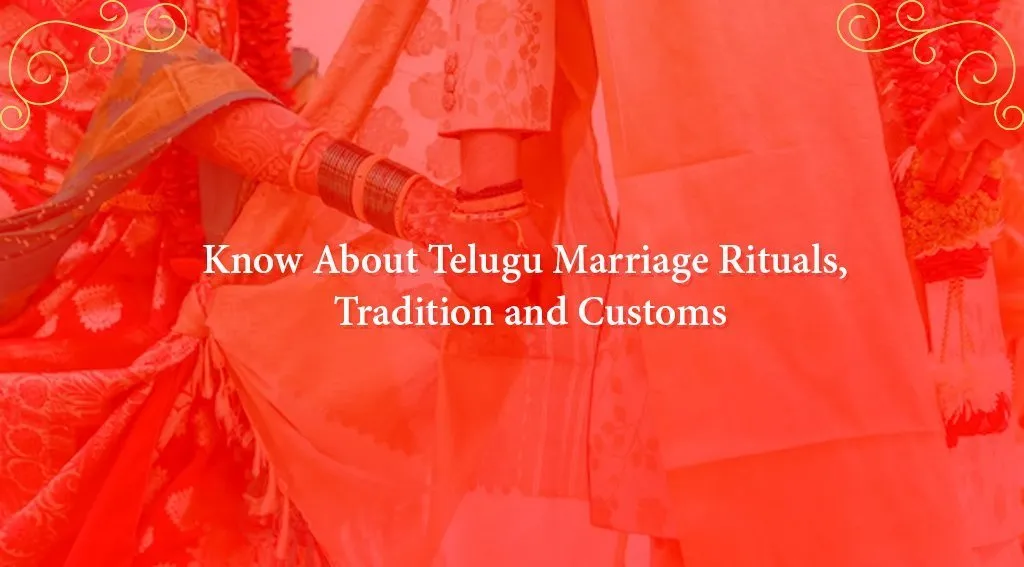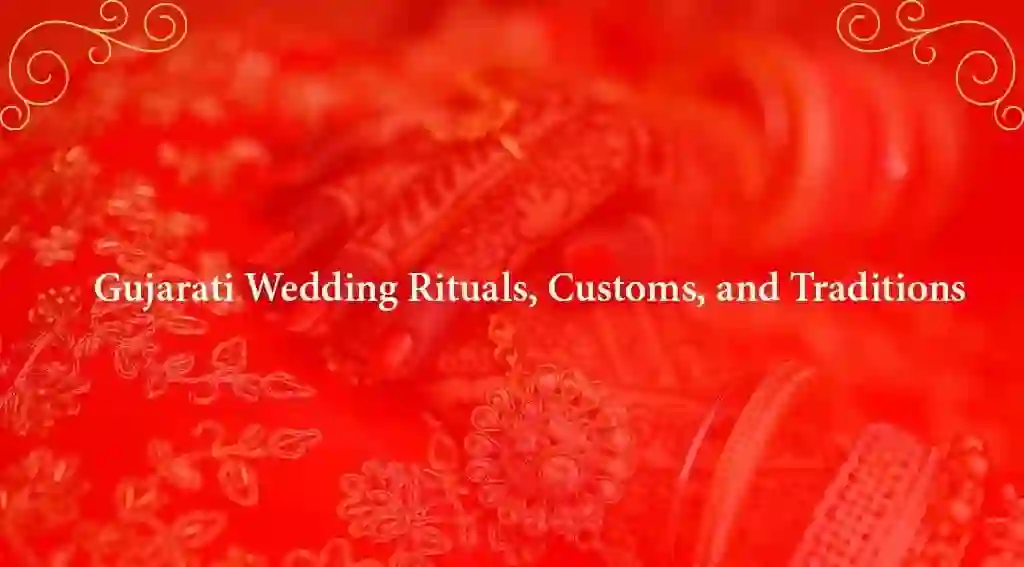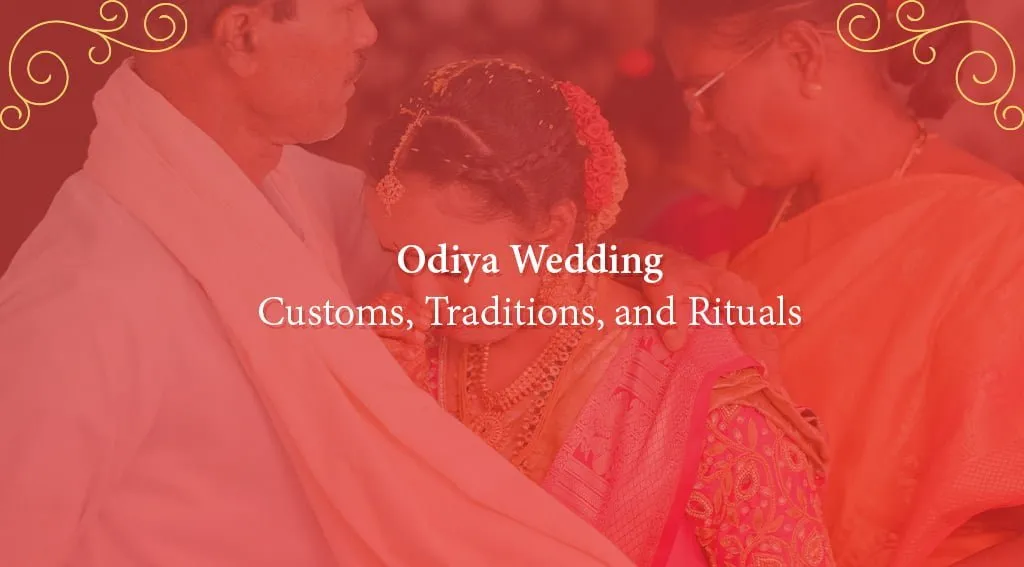Kannada wedding rituals are an amalgamation of rich traditions, rituals, and customs that reflect the cultural heritage of Karnataka, a southern state in India. These weddings are full of vibrant colors, exuberant celebrations, and elaborate ceremonies that make them unique.
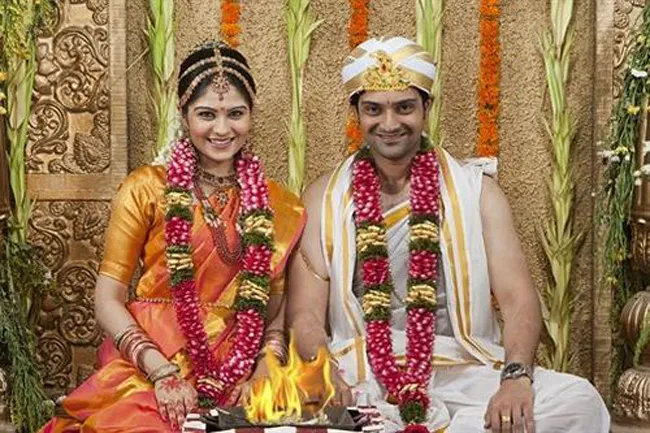
In this article, we will take a deep dive into the fascinating world of Kannada weddings, exploring the pre-wedding, wedding, and post-wedding rituals and the customs that make these ceremonies unforgettable.
Kannada Weddings Rituals and Traditions
Pre-Wedding Rituals
Naandi Custom
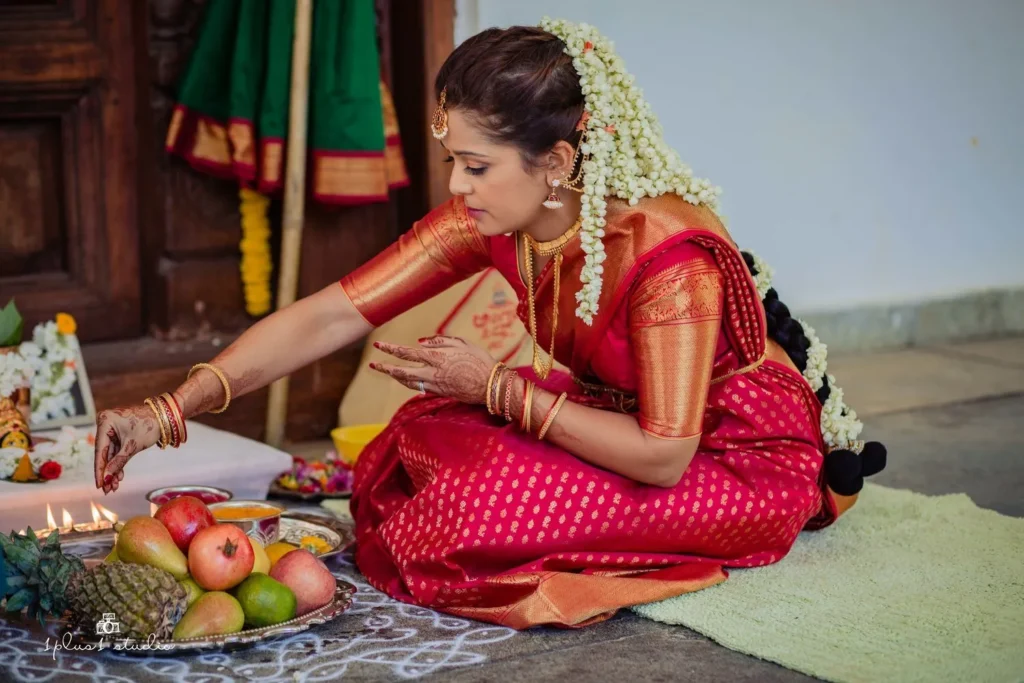
The Naandi custom marks the commencement of wedding festivities. It involves seeking blessings from the family deity and ancestors for a successful wedding. The bride and groom perform this ritual separately at their respective homes.
Nischay Tamulam
Nischay Tamulam is the engagement ceremony where the formal announcement of the wedding is made. The families exchange betel leaves, betel nuts, coconuts, fruits, and clothes as a symbol of acceptance and goodwill.
Also Read | Top 10 Makeup Products for Brides and Bridesmaids.
Dev Karya Custom
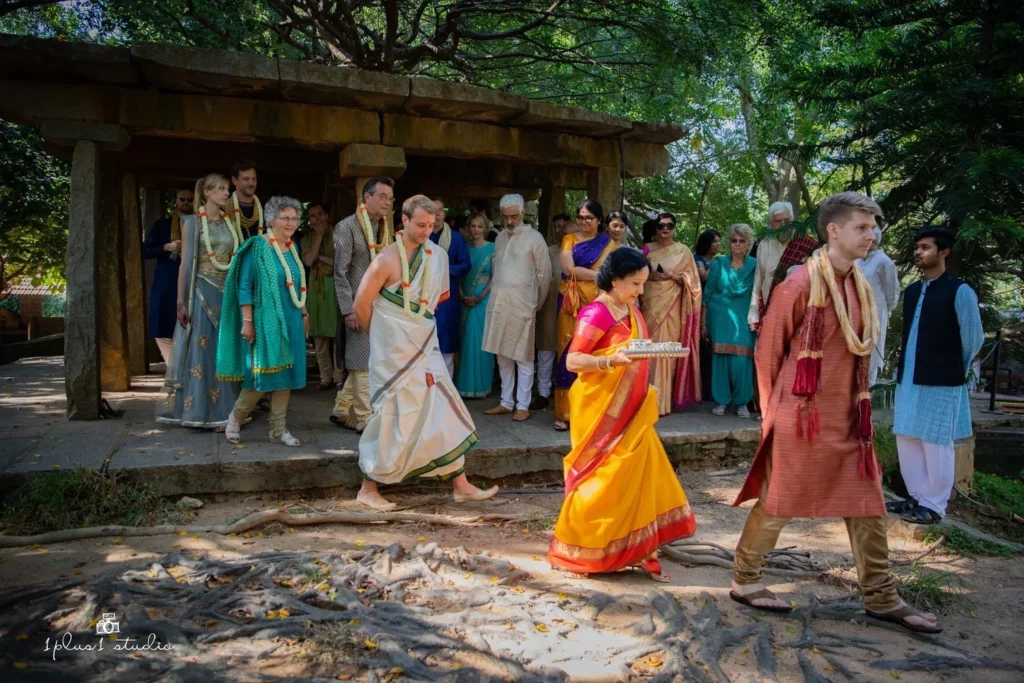
The families seek blessings from the gods and ancestors to ensure a harmonious wedding. This ritual involves performing special prayers to invoke divine blessings.
Kaashi Yatre
In this light-hearted ritual, the groom pretends to leave for Kashi (Varanasi), and the bride’s brother convinces him to stay and marry his sister. It adds an element of fun and humor to the pre-wedding events.
Sangeet and Haldi
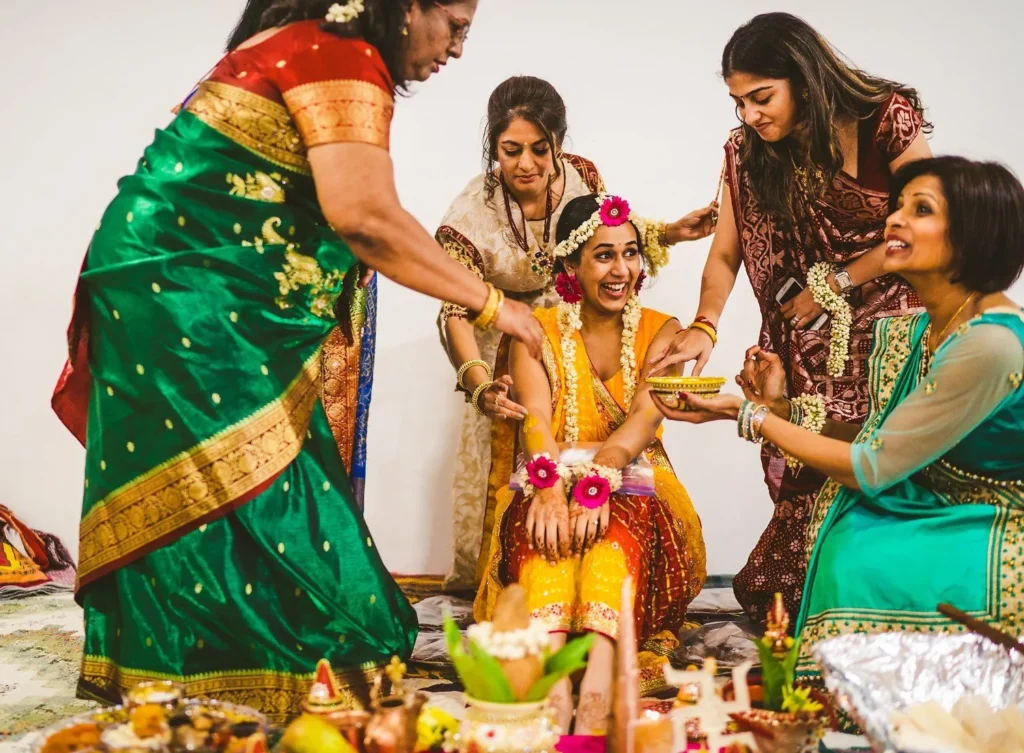
The Sangeet ceremony involves singing and dancing in celebration. On the same day or the day before the wedding, the Haldi ceremony takes place, where turmeric paste is applied to the bride and groom as part of the beautification process.
Also Read | Top Wedding Makeup Trends For Bride and Bride Maids
Wedding Rituals
Mandap Puja
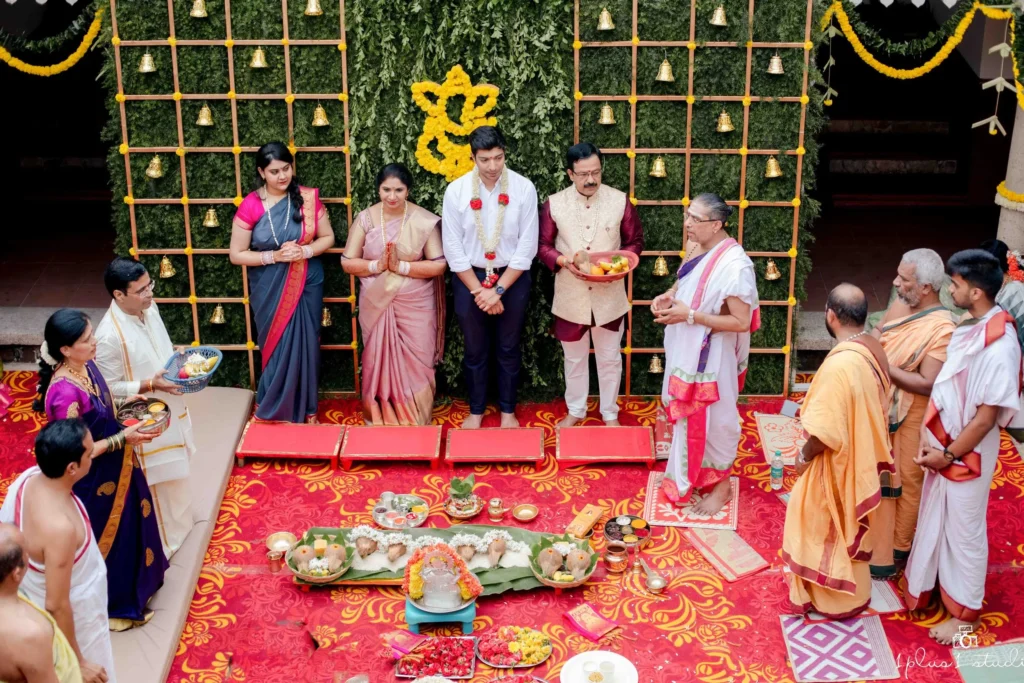
The wedding ceremony begins with the Mandap Puja, where the priest invokes the blessings of Lord Ganesha and seeks his presence for a successful wedding.
Ganapati Puja
Before the arrival of the bride and groom, a Ganapati Puja is performed at the mandap to seek Lord Ganesha’s blessings, the remover of obstacles.
Also Read | Best Wedding Saree Trends for Brides-Mother.
Olaitha
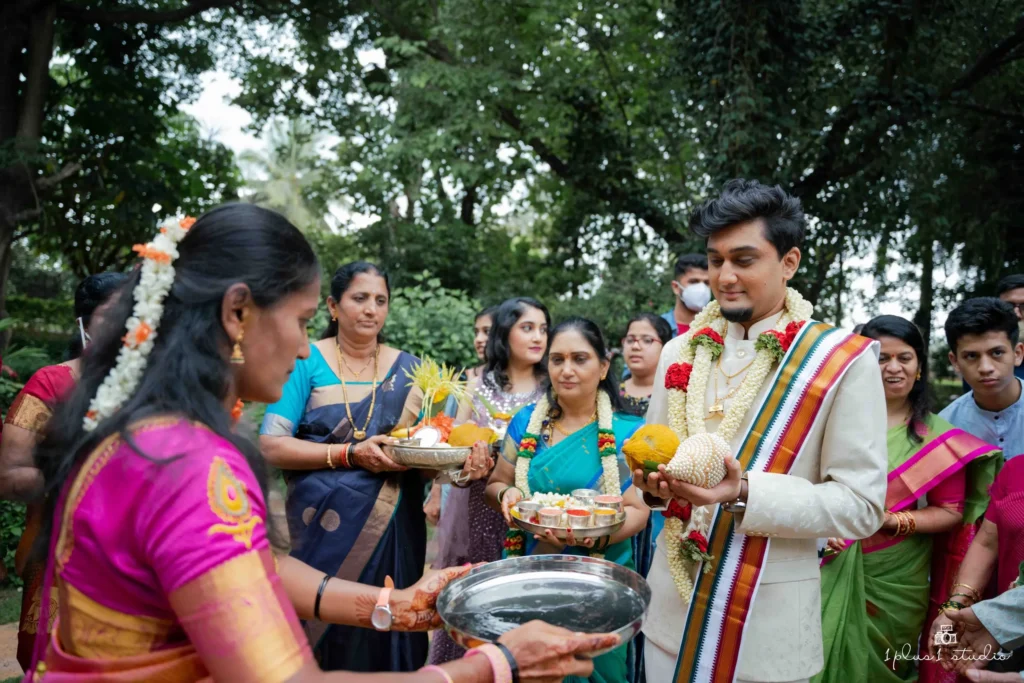
The Olaitha ritual is an emotional moment when the bride’s parents give her away to the groom while expressing their love and blessings.
Mangalsutra Dharana
During this pivotal moment, the groom ties the sacred mangal sutra (a necklace with black beads) around the bride’s neck, symbolizing their eternal bond.
Also Read | Top 11 Wedding Dress Designers To Know in 2023
Akshata and Arundhati Darshan
Rice mixed with turmeric is showered on the couple as a symbol of prosperity and fertility. They also seek blessings from the star Arundhati for a strong and lasting marriage.
Saptapadi

The bride and groom take seven sacred vows, known as Saptapadi while circling the sacred fire. Each vow represents a promise they make to each other for a blissful married life.
Dhare Herdu Custom
The groom carries the bride across the threshold of her new home. It signifies her entry into his life and their new journey together.
Vidaai
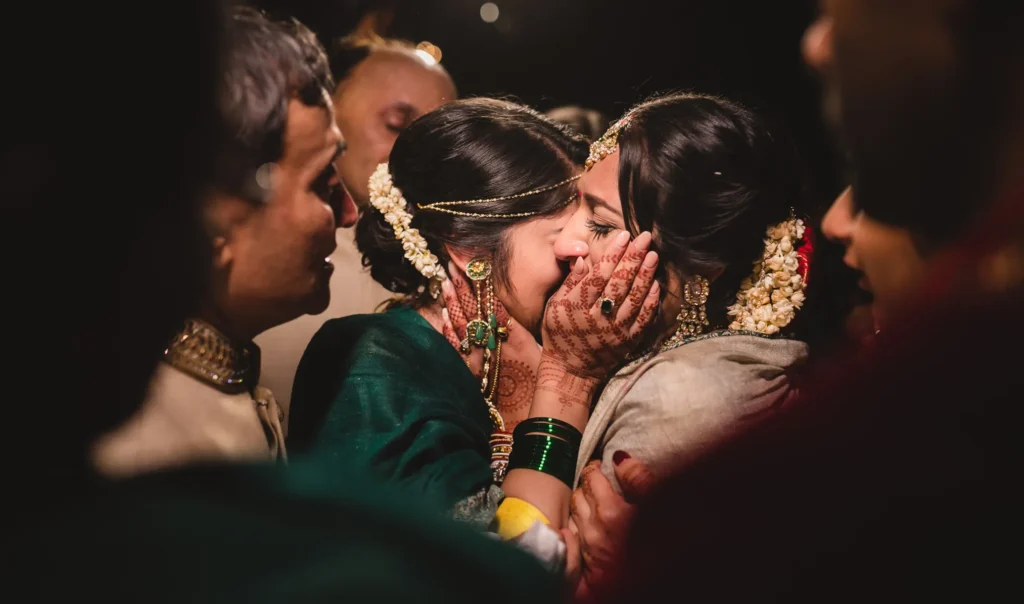
The Vidaai ceremony is a tearful farewell where the bride leaves her parental home to start a new life with her husband. It is an emotional moment for both families.
Post-Wedding Rituals
Reception

After the wedding ceremony, a grand reception is held. Here the couple is introduced as a married couple to the extended family and friends.
Mooh Dikhai
The bride unveils her face to her new family, and they offer her gifts and blessings. It is done in a ritual called Mooh Dikhai.
Gruhapravesha
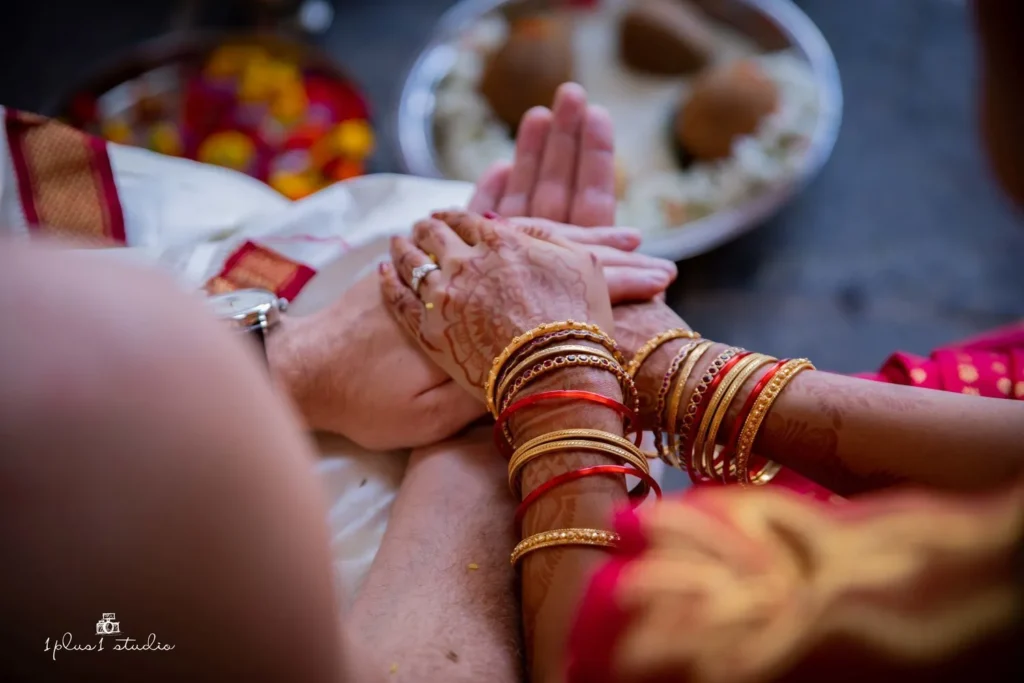
The bride enters her new home and is welcomed by the groom’s family. She is considered the Lakshmi of the house, symbolizing wealth and prosperity.
Grihasthashrama
The couple seeks the blessings of the family deity and ancestors for a prosperous and happy married life. It embarks on the journey of Grihasthashrama (family life).
Sada Suhagin Custom

The newlywed bride seeks blessings from all the elders in the family. It leads to a blissful married life as a Sada Suhagin (married woman).
Suggi Kattida Kunita
After the wedding, traditional games like Suggi Kattida Kunita are played. It brings joy and laughter to the newlywed couple and their families.
Conclusion
Kannada weddings are a beautiful fusion of age-old traditions and cultural heritage, filled with love, joy, and festivities. These weddings celebrate the union of two individuals and the coming together of two families.
What does the Grihasthashrama ceremony signify?
The Grihasthashrama ceremony signifies the beginning of the couple’s shared life together, seeking blessings for a harmonious and prosperous family life.
What is the essence of the Vidaai ceremony?
The Vidaai ceremony is emotionally charged, representing the bride’s transition from her parental home to her husband’s home. It symbolizes love, affection, and new beginnings.
Why is the Saptapadi considered a crucial ritual?
The Saptapadi is significant as the couple takes seven vows, promising to support and cherish each other in their journey of marriage. It forms the foundation of their wedded life.
Why is Lord Ganesha worshiped before the wedding ceremonies?
Lord Ganesha is the remover of obstacles and is revered as the god of new beginnings. Worshiping him before the wedding ensures a smooth and hurdle-free ceremony.

